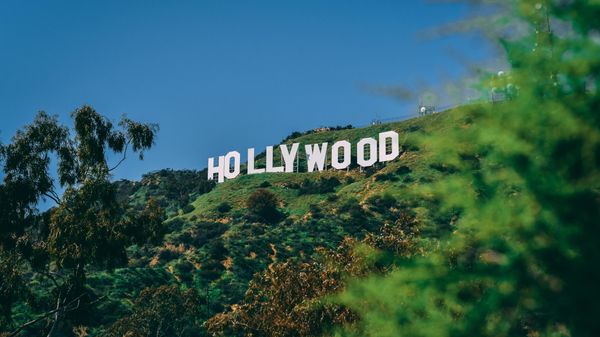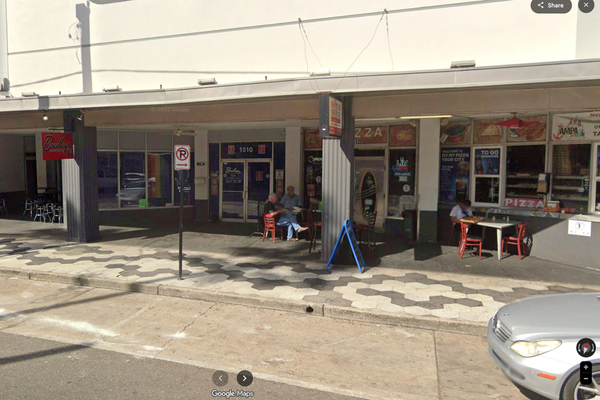
It is now a matter of film legend that the Mad Max movie franchise was inspired by long flat Australian country roads where speed limits are theoretical and carnage is regular. Director George Miller grew up in Chinchilla in Queensland, west of the Darling Downs. He remembers a place of loamy soil, heat haze and burnt land, with a very intense car culture.
“The main street of town and Saturday night were just the kids in the cars,” he said in an interview with Australian Screen, the news outlet of the National Film and Sound Archive, in 2006. “By the time we were out of our teens, several of our peers had already been killed or badly injured in car accidents.”
In a small town you tend to emotionally log every accidental death – that is, any death of a person before their time.
We certainly remember distant acquaintances, friends, neighbours and relatives who have died in twisted metal. I can still summon the contours of my town’s grief around historic road accidents, marked by an X on a rock or a telegraph pole. A time when counsellors were sent into little schools and the subsequent funerals slowed the main-street traffic to a crawl.
After graduation, Miller witnessed the “disturbing” aftermath as an emergency doctor. Looking at that first Mad Max movie again, I was reminded of its setting on a mix of country roads much like the ones around most rural towns. There were even green paddocks in some 1970s scenes.
But as the story developed, Max’s world warped into a wilder dystopia. The latest instalments show Max and then the warrior woman Furiosa battling baddies out on red dirt. The cars are faster, the roads are mostly gone and the climate is hotter.
We know global heating is a thing but is Furiosa also a prediction of road conditions? Regional Australians are five times more likely to die in road crashes than people in cities, according to analysis by the Australian Automobile Association.
In the last few years, the road toll has surged and experts don’t really know why. Last year was the worst road death toll in five years with 1,253 lives cut short in a car accident.
More recent figures from the Bureau of Infrastructure and Transport Research Economics show 1,303 people died on Australian roads in the year to 31 May, up from 1,180 a year earlier.
If you break it down state by state, you get a clearer picture of the numbers. NSW deaths are up by nearly one-third (32.9%) and road deaths in the Northern Territory are surging (72.4%), with increases in Victoria (5.1%), Queensland (5.1%), and South Australia (2.1%).
While states share the road toll figures, they do not share the crash investigation data. This has been the subject of a concerted campaign by the AAA, which has brought together safety advocates, doctors, engineers and freight operators to press governments to act.
Transparent accident investigation data might show, for example, in a single car accident whether the driver fell asleep or simply hit a massive pothole and speared off into the scrub. Shared data would allow governments and the public to see the worst road toll blackspots.
Did you know your local roads are given a safety rating out of five by road engineers under the Australian Road Assessment Program, funded by taxpayers?
The public does not have this information across the country. Yet think back to any election when road funding promises are standard fare for rural and regional MPs. The ribbons are cut and the big cheques are handed out but our communities are still unable to see exactly why a decision to fix a road is made.
Country roads are dodgy at the best of times, although all of us probably have some egregious examples of immaculate roads beautifully tarred all the way to the local power broker’s driveway. Every community has a character like councillor Bill “you can’t stop progress” Heslop played by Bill Hunter in the film Muriel’s Wedding.
In the last road funding agreement, the commonwealth allocated $10bn to the states, which expired on 30 June this year. Just before the 2022 election, the transport minister, Catherine King, promised to extract better road safety data from the states and territories. Now the federal government has committed to make its road funding to states contingent on better safety data.
But the deal still needs sign off from the states and while Queensland has committed, the other states are a little gun-shy.
Such transparency would provide a clear picture of the dodgiest roads that might be causing ongoing carnage in our places large and small.
If rising road deaths are not enough to open data vaults, states might want to think about their economies. Poor roads slow freight corridors to domestic and export markets. Regional Australia contributes about two-thirds of Australia’s export earnings via industries like agriculture, tourism and resources and is home to one-third of the population.
Friends recently pushed their motorbike into our driveway, having hit a big pothole on our road they did not see. So great was the jolt they lost the sump and the oil drained.
I tried bike riding on my road for about a week before I worked out that on a country road, drivers can’t hear you scream.
Not unlike the insane vehicles from the mind of George Miller, our ordinary cars are getting faster and quieter. This is a big country and in order to get places, country drivers travel at speed. No one needs more memories of funerals or more little roadside shrines.







